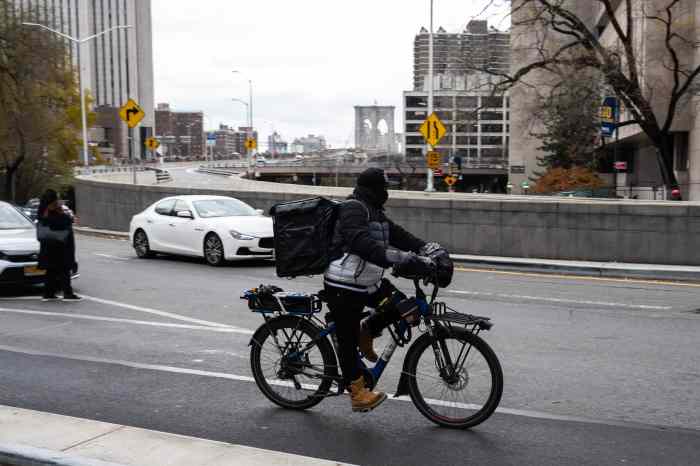By George H. Tsai
The influx of new immigrants has made Flushing the fastest-growing metropolis among the city’s five boroughs. New stores and mini-malls have emerged one after another while construction projects continue to pulse through this part of Queens.
Most of the newcomers are Asians from China, India, Japan, Pakistan, the Philippines and South Korea. Of course, there are lots of Hispanics and other ethnic groups. Asians, according to the latest official figures, account for 10 percent of the city’s population of 8 million. And the Chinese have a lion’s share of the percentage.
A growing number of them have realized their American dream. This presents a sharp contrast to those who migrated to the East Coast more than 100 years ago. Early last year, a PBS channel in New York presented a documentary about the struggle and plight of the early Chinese migrants, mainly peasants.
Like today’s immigrants, those peasants came to this part of the world in hopes of fulfilling a better-life dream. However, that dream was shattered because their rights were restricted. They had to remain unmarried. Besides, they found it extremely hard to land decent jobs.
About 30 years ago, a colleague asked if I understood such an expression as “you don’t have a Chinaman’s chance.” My answer was negative. That offensive maxim might have been coined to reflect the predicament facing those peasants.
A century or so later, a young man from Taiwan was elected to New York City Council to speak for Asians and other minorities in the 20th District for the first time.
John C. Liu, who came from Taiwan at age 5, grew up in Flushing, where voters sent him to the City Council in November as their voice.
Liu, 35, was chosen by his peers to chair the council’s transportation committee. A longtime local resident, Liu is aware of the problems facing Flushing today — traffic jams, litter on the sidewalks, as well as affordable-housing and parking-space shortages. Rising crime is of no small concern to people here. Quite a few residents recently were robbed and assaulted four days in a row while walking on the streets at night.
As the committee’s chairman, the junior lawmaker should exercise his power to help Queens Borough President Helen Marshall and his constituents polish Flushing’s image.
In the meantime, some Asians in the metropolitan area entertain a hope that an Asian-American will be elected someday to the state Assembly or Senate. Liu could be a hopeful if his constituents are satisfied with his job performance as a city councilman.
Elaine L. Chao, who also came from Taiwan at 8, is President Bush’s labor secretary. Chinese-Americans take great pride in her achievement. During a recent visit to New York’s Chinatown, she received a tumultuous welcome. Her success bespeaks that if you have marketable skills, you will achieve what you want because this is a land of opportunities.
In fact, many talented Asian women are now part of the American mainstream of life, working as reporters, editors and anchors at TV stations across the nation. Connie Chung is one of them. She will soon become a CNN news anchor.
The new immigrants are quite different from the earlier ones who worked so hard to secure a place for themselves in the New World. A majority of the new arrivals are well-educated professionals; many speak both English and their native language. Some of them are now successful entrepreneurs.
In America today, there are a lot of Asian writers, fine artists and filmmakers, who have devoted themselves to documenting the early struggles of their people. These artists are responsible for giving a voice to the earlier immigrants and to bringing alive a history that for the most part has been buried by shame.
The Chinese pioneers migrated to America’s West Coast in the mid-1800s to take advantage of the opportunities brought on by the discovery of gold. A couple of decades later, a significant number of Japanese followed suit. The South Asians didn’t come until the early 20th century. California was the first destination point.
The California gold rush began in 1849 and continued into the 1850s. The Chinese later expanded their hunt for gold to British Columbia, Canada, and settled there. While striking gold was their goal, they also played a key role in the building of the infrastructure of Canada and the United States, including the transcontinental railroad which was completed in 1869.
Those pioneers worked very hard in order to send money back home to support their families and to build new lives in the New World. Unfortunately, many left their loved ones behind for a lifetime. Their struggles and sacrifices have certainly paved a smooth and easy way for the new arrivals.
Reach columnist George Tsai by e-mail at TimesLedger@aol.com or call 229-0300, Ext. 140.


































